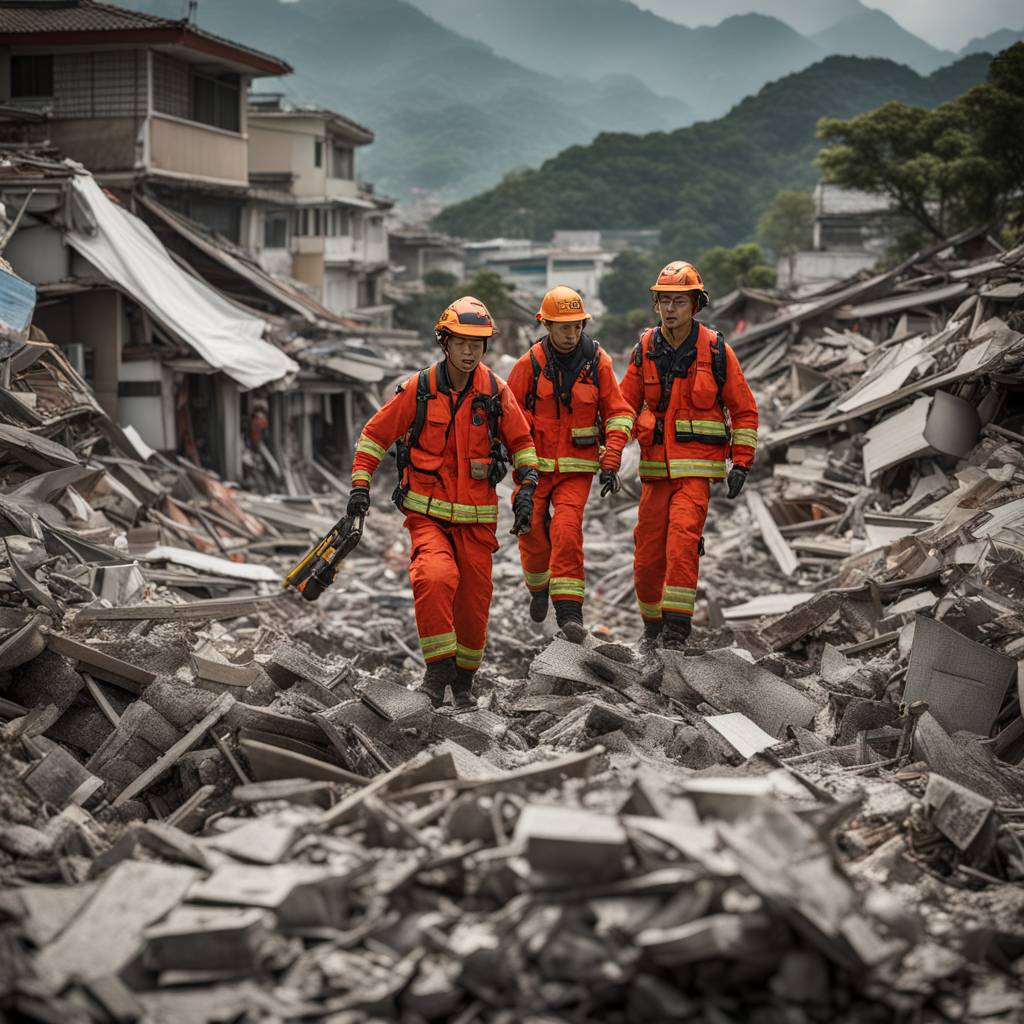In Hualien, Taiwan, rescuers are continuing the search for dozens of people who are missing following the country’s strongest earthquake in 25 years. The earthquake damaged buildings, killed nine people, and left others stranded in remote areas or sleeping in tents. In Hualien, workers are stabilizing damaged buildings using construction materials, with some structures tilting at precarious angles with crushed ground floors. The main road between the county and the capital remains closed, but life on the island is gradually returning to normal with some local rail service resuming and the Taiwan Semiconductor Manufacturing Co. restarting most operations.
Taiwan is a country regularly affected by earthquakes, and its population is well-prepared for such events. Stringent construction requirements ensure that buildings are built to be quake-resistant. In the aftermath of the earthquake, many residents in Hualien are still staying in tents out of fear of aftershocks. The Prime Minister of Taiwan visited earthquake evacuees at a temporary shelter, offering support and assistance to those affected by the disaster. Nearly 1,070 people were injured in the quake, and efforts are ongoing to locate those still missing or stranded, including over 600 individuals at a hotel called Silks Place Taroko.
The earthquake’s impact was particularly severe in Taroko National Park, a popular tourist destination known for its stunning canyons and cliffs. Multiple deaths were reported at the park, with some people found dead in a damaged building and a quarry. Over 600 people were reported to be stranded inside Silks Place Taroko, but authorities reassured that they were safe and had access to food and water. Rescue operations were successful in freeing around 60 workers who were trapped in a quarry due to blocked and damaged roads. Efforts are ongoing to locate and aid others who may still be stranded or out of contact with authorities.
The earthquake and subsequent aftershocks triggered landslides, damaged infrastructure including roads, bridges, tunnels, and buildings in Taiwan. While the full extent of the economic losses is still unclear, the country’s status as a leading manufacturer of computer chips and high-tech items makes it sensitive to seismic events. Hualien, where the earthquake hit, had previously experienced a deadly quake in 2018 that resulted in 17 deaths and the collapse of a historic hotel. Taiwan’s deadliest recent quake occurred in 1999, claiming 2,400 lives, injuring around 100,000 people, and causing extensive destruction to buildings and infrastructure.
Authorities and rescue workers have been working tirelessly to ensure the safety and well-being of those affected by the earthquake. Local television footage showed dramatic scenes of residents being rescued from damaged buildings. While some areas have returned to normalcy, the impact of the quake continues to be felt through aftershocks and ongoing rescue operations. Taiwan’s resilience and preparedness in the face of natural disasters are evident as communities come together to support each other during this challenging time.








